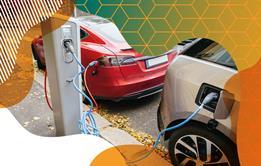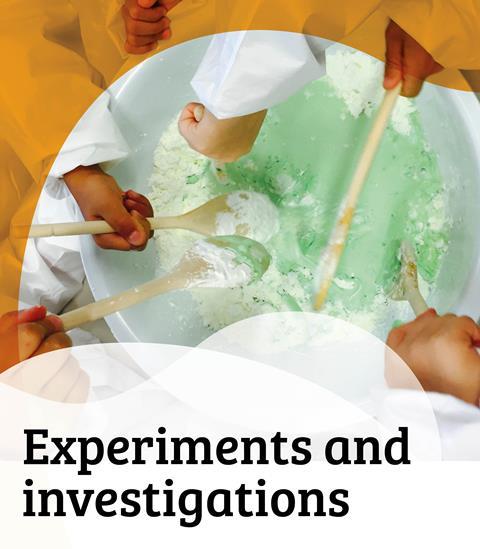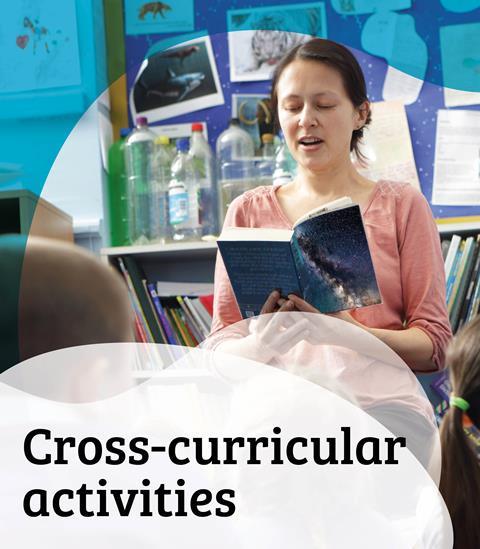Use recycling and how much rubbish is produced in your school as contexts for teaching about materials
This resource is also available in Welsh and Irish
Get the Welsh language version.
Get the Irish language version.
How can we classify materials for recycling? How can we found out how much rubbish is generated in our school? This topic web contains sustainability context ideas and classroom activity suggestions for teaching about materials to 4–7 year olds. Explore recycling materials and upcycling clothes, or investigate the amount and different types of waste in your school.
Each web explains the background science, describes how scientists are working in this field, and suggests ways to explore this in the classroom.
How to use this topic web
This resource is part of our Sustainability contexts for primary science teaching series. The series features a total of 20 topic webs designed to help you link your existing curriculum teaching to sustainability issues.
Find out more about how to use this topic web in your teaching.
-

Download this resource
Get both topic webs on materials, recycling and rubbish for 4–7 years, with tips and suggested activities to use in the classroom.
Topic web 1: Reduce, Reuse, Recycle
What’s the science?
As the world’s population increases, consumption of resources also grows. Throwing things away is a waste of these resources and energy. It also has a major impact on the environment. Waste that is not biodegradable and isn’t recycled is filling oceans and landfills. This has a negative impact on wildlife, the natural environment and public health.
What are scientists doing about it?
Researchers are continually looking for ways to improve the recycling process. Analytical technicians are developing ways to alter the structure of plastics so they become biodegradable in the natural environment. The government have also set recycling targets related to plastics and other materials. The resource hierarchy is useful in demonstrating how to approach usage and disposal of resources in order of priority.
How could you explore this in the classroom?
- Learners could research using secondary sources by watching videos and finding out about the 3Rs – Reduce, Reuse, Recycle. They could identify, classify and sort materials (eg glass, plastic, paper) and identify whether they would reduce, reuse or recycle them.
- Consider how to reuse materials by looking at images and real items that have been ‘upcycled’ (reused in a creative way). Ask learners to think about their clothes and introduce the term ‘Fast Fashion.’ Explore what this means using videos and research. They could find out about how people in the past would often make and repair their own clothes/repurpose them.
- Learners could consider the ‘story’ of their clothes using labels to investigate material and origins. They can think about what they do with their clothes when they no longer wear them. Learners could consider the properties of the material that make it suitable for a particular purpose. Learners could bring in an old T-shirt from home and repurpose it, for example into a bag.
- This could link to DT (textiles) as learners use/develop their sewing skills, by sewing on buttons or carrying out a simple repair. They could write instructions (to link to literacy).
Curriculum links
Materials; DT (textiles); literacy; researching using secondary sources.
Topic web 2: Where does our rubbish go?
What’s the science?
In the UK, each person creates about 400 kg of waste every year. Food waste is a concern with seven million tonnes being thrown away each year. Waste that cannot be recycled goes to landfill which has a negative impact on the environment. Landfill sites are one of the causes of climate change. They generate and release biogas into the atmosphere. They can contaminate soil and water and cause fires and, occasionally, explosions.
What are scientists doing about it?
Scientists have a major role to play when it comes to food packaging and developing alternative materials in order to reduce plastic waste going to landfill.
Researchers are working towards reducing unnecessary food waste by developing food labels to help consumers understand when food spoils, which could result in saving up to 63% of food waste in an average household.
How could you explore this in the classroom?
- Learners could research using secondary sources by finding out how much waste is generated in the UK, including food waste, and where this comes from. They could pose their own questions and find answers to these.
- Ask learners to consider the questions, ‘How much rubbish is generated in our school?’ and ‘How could we find this out?’.
- Learners could design their own methods to answer these questions, such as weighing the bins in the classroom at the end of each day. They could make comparisons between different classrooms and compare how much waste is going to landfill vs being recycled.
- Learners could also investigate food waste by weighing food waste bins at the end of each lunchtime across a week and then recording their results.
- If the school doesn’t have a composting area, learners could use their findings to persuade the headteacher that this would be a good idea. They could write letters or deliver a presentation to help develop their literacy skills. Or they could create a simple wormery within a DT lesson and write instructions on doing so.
- Learners can develop maths skills through weighing and presenting their results using graphs/charts.
Curriculum links
Researching using secondary sources; making fair comparisons; DT; recording and handling data; literacy; observing living things; maths.
Try these additional resources
- Try more sustainability topic webs to provide context for key topics in primary science, including habitats and seasonal changes for 4–7 year olds.
- Explore materials further with our topic webs on materials for 7–9 and 9–11 year olds.
- Read up on the background science for properties of materials and grouping materials with our That’s Chemistry! chapters.
Downloads
Materials, recycling and rubbish | 4–7 years
PDF, Size 0.11 mb
Sustainability contexts for primary science

Find out how to teach science curriculum topics through engaging sustainability contexts. Our topic webs include suggestions for classroom activities that develop numeracy, literacy and scientific skills.
- 1
- 2
 Currently
reading
Currently
reading
Materials, recycling and rubbish | 4–7 years
- 4
- 5
- 6
- 7
- 8
- 9
- 10
- 11



































No comments yet